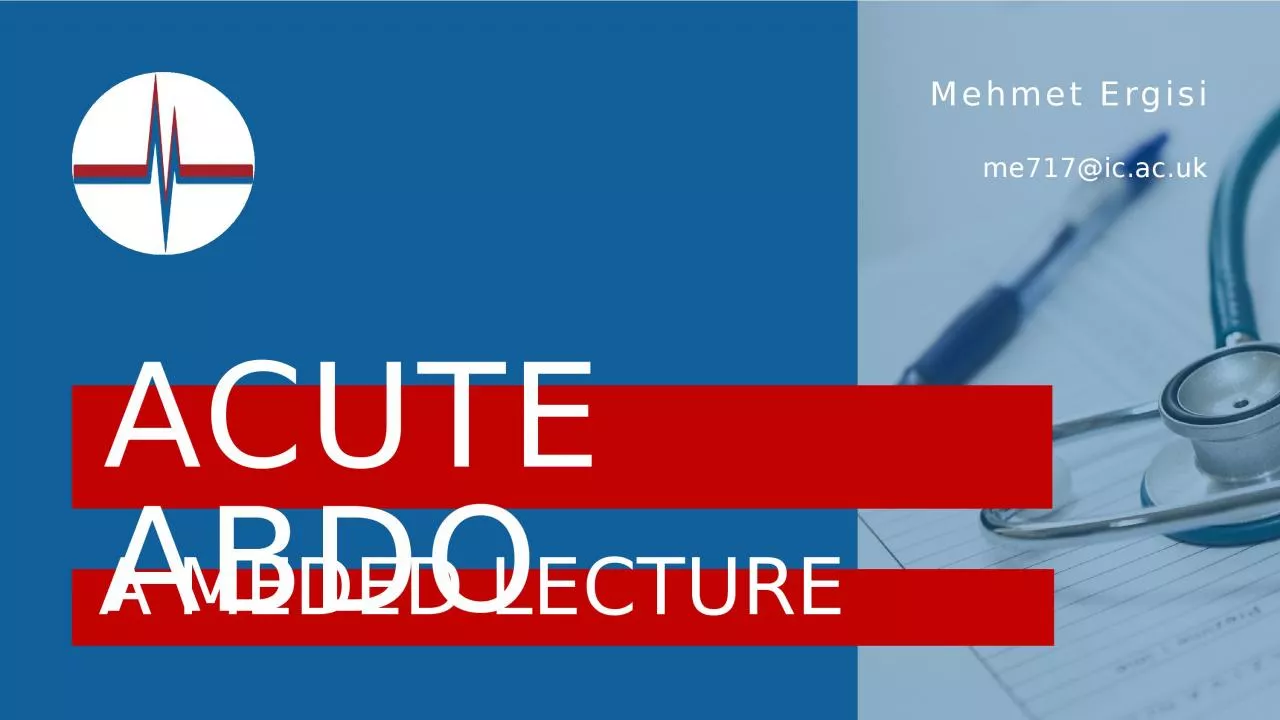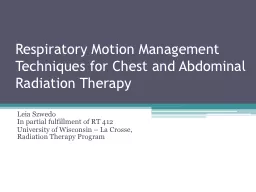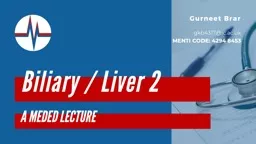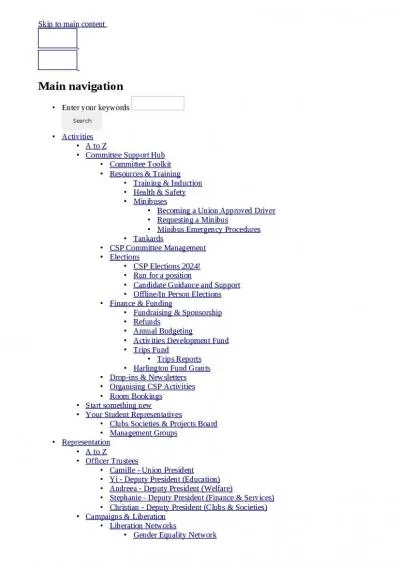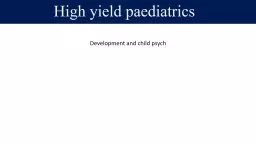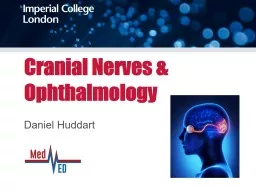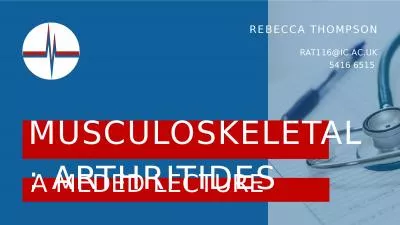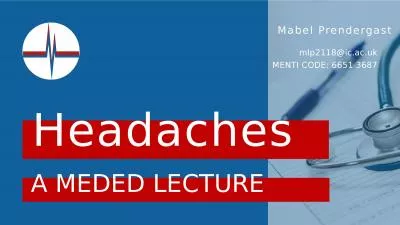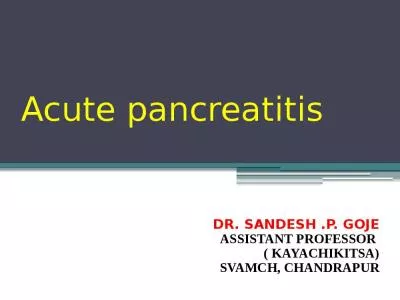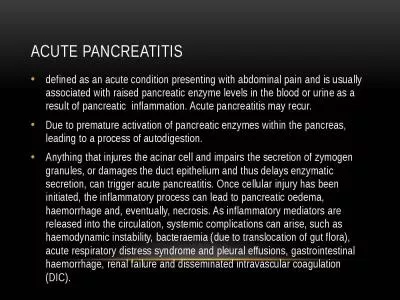PPT-A MEDED LECTURE ACUTE ABDO
Author : clara | Published Date : 2023-09-20
Mehmet Ergisi me717icacuk SBA 1 A 17yearold female presents to the emergency department with periumbilical pain The pain is sharp in nature is exacerbated by coughing
Presentation Embed Code
Download Presentation
Download Presentation The PPT/PDF document "A MEDED LECTURE ACUTE ABDO" is the property of its rightful owner. Permission is granted to download and print the materials on this website for personal, non-commercial use only, and to display it on your personal computer provided you do not modify the materials and that you retain all copyright notices contained in the materials. By downloading content from our website, you accept the terms of this agreement.
A MEDED LECTURE ACUTE ABDO: Transcript
Download Rules Of Document
"A MEDED LECTURE ACUTE ABDO"The content belongs to its owner. You may download and print it for personal use, without modification, and keep all copyright notices. By downloading, you agree to these terms.
Related Documents

